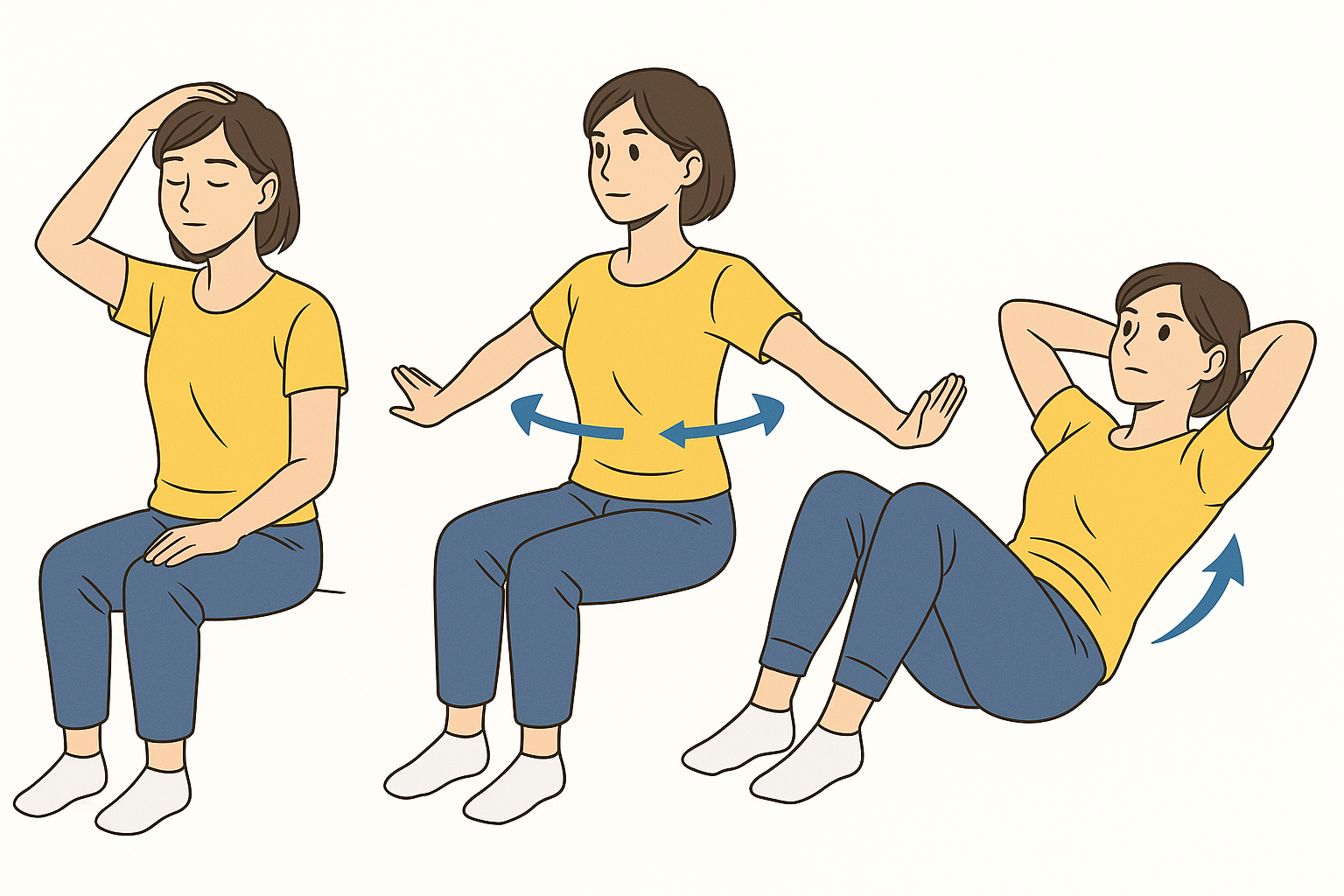↓↓English Below↓↓
皆さんこんにちは!!
東京都千代田区 麹町駅と半蔵門駅の間 新宿通り沿いのビル2階・3階にある整形外科クリニック“One Clinic 麹町(ワンクリニック麹町)” 院長の栗本です!!
連休も終盤に差し掛かりましたが、しっかり休めて、日常の疲労は抜けてきていらっしゃいますでしょうか?
今回は「疲労」について書いてみたいと思います。
「しっかり寝ているのに、常に体がだるい」「朝起きても疲れが取れていない」
日々の生活の中でそういった悩みはありませんか?当てはまる場合、もしかするといわゆる「慢性疲労」と呼ばれている状態かもしれません。
そんな慢性疲労の悩みは、単なる体力の問題ではなく、“頚”や“姿勢”の乱れが原因となっていることがあります。
今回は慢性疲労を「姿勢」や「神経・筋肉のアンバランス」といった身体構造の視点から捉え、リハビリや栄養サポートを通じた多角的なアプローチで改善を目指します。
慢性疲労と頚・姿勢の深い関係
慢性疲労症候群(CFS)は、原因が明確に特定しづらい疾患の一つですが、その背景には自律神経の乱れや血流障害、筋肉の硬直が複合的に関係していると考えられています。
特に、現代人に多い「ストレートネック」や「猫背」のような姿勢不良は、首〜背中の筋肉に過剰な緊張を与え、神経や血管を圧迫することで疲労感を増幅させます。
また、頚を通る自律神経は全身の血流・呼吸・消化・睡眠に関与しており、このバランスが崩れると、
「疲れが取れない」「朝から重だるい」といった症状が続く原因になります。
整形外科的リハビリで“疲れにくい体”をつくる
当院では、慢性疲労の背景にある筋骨格系の問題に着目し、患者さん別にフィットしたリハビリプログラムを提供しています。
ポイントは以下の3点です:
① 姿勢評価と動作分析
・ストレートネックや巻き肩、骨盤の傾きなどを診察で細かく確認し
・姿勢保持筋(深部筋群)の弱さや左右バランスの崩れを可視化します
・リハビリのなかで呼吸の浅さや体幹の不安定性を確認し、改善につなげます
② 筋膜リリース+手技療法
・頸部・肩甲帯・胸郭周囲の筋肉や筋膜を手技でほぐし、血流を促進させます
・頚肩腕症候群に代表される筋肉の過緊張による神経圧迫を緩和し、頭痛や眼精疲労があってもその軽減を目指します
③ 自宅でできるセルフストレッチ・運動療法の指導
・首の側屈・回旋運動や肩甲骨の動きを高める簡単な体操
・胸椎を動かすことで呼吸を深くし、自律神経の安定にもつなげます
・インナーマッスル(腹横筋、多裂筋など)を活性化する体幹トレーニング(トレーニング機器の相談も可能です)
これらを段階的に行うことで、筋肉や神経の働きを正常化し、疲労感そのものの感じ方を変えていくことが可能になります。

慢性疲労とサプリメント
筋肉や神経の機能を整えるには、運動だけでなく、内側からのサポートも重要です。
特に以下の栄養素は、慢性疲労の回復を補助する目的で当院でも推奨しています。
- マグネシウム:筋肉の緊張を緩和し、神経伝達やエネルギー産生をサポート。睡眠の質向上にも期待できます。
- BCAA(分岐鎖アミノ酸):筋肉の修復・合成を助け、リハビリ後の回復や体力の底上げに効果的です。
- EAA(必須アミノ酸):BCAAを含む8種もしくは9種のアミノ酸を網羅し、筋肉だけでなく神経系や代謝機能のサポートにも寄与します。食事での摂取が難しいバランスを補えるのが利点です。
詳しくは以前のブログを参照してみてください!(^^)!
※当院ではHALEOの製品をご注文いただけます。ご注文から受け取りに数日お時間を頂戴することもございますのでご了承くださいませ。
まとめ
慢性疲労は「気のせい」や「加齢」のせいではありません。
身体構造の乱れや筋肉等のバランス不全が積み重なった結果として、脳や体が“休めない”状態に陥っている可能性があります。
当院では整形外科的視点で姿勢や筋肉の状態を丁寧に評価し、リハビリ・運動・栄養を組み合わせたトータルケアで疲労感の根本改善を目指します。
「なんとなくずっと疲れている」――その悩み、一度当院までご相談ください。
Hello everyone!
I am Dr. Kurimoto, Director of “One Clinic Kojimachi,” an orthopedic clinic located on the 2nd and 3rd floors of a building along Shinjuku-dori between Kojimachi and Hanzomon Stations in Chiyoda-ku, Tokyo!
As we approach the end of the consecutive holidays, I hope you have had a good rest and are getting rid of the fatigue of daily life.
This time, I would like to write about “fatigue.
Do you have such problems in your daily life? If so, you may be suffering from what is called “chronic fatigue.
The problem of chronic fatigue is not just a matter of physical strength, but may be caused by a disorder of the “neck” or “posture”.
In this article, we will look at chronic fatigue from the viewpoint of physical structure, such as “posture” and “nerve/muscle imbalance,” and aim for improvement through a multifaceted approach that includes rehabilitation and nutritional support.
The Deep Relationship between Chronic Fatigue and Neck/Posture
Chronic Fatigue Syndrome (CFS) is one of the diseases whose cause is difficult to clearly identify, but it is believed that the background of the disease is related to a combination of autonomic nervous system disorders, blood flow disorders, and muscle stiffness.
In particular, poor posture, such as the “straight neck” and “hunched back” that are common among modern people, causes excessive tension in the muscles of the neck and back, which in turn presses on nerves and blood vessels, amplifying the feeling of fatigue.
In addition, the autonomic nerves that pass through the neck are involved in blood flow, breathing, digestion, and sleep throughout the body, and an imbalance in these nerves can cause persistent symptoms such as “I feel tired” and “I feel heavy in the morning.
Creating a “less tired” body through orthopedic rehabilitation.
One Clinic Kojimachi focuses on musculoskeletal problems that underlie chronic fatigue, and offers rehabilitation programs tailored to each patient’s specific needs. The three points are as follows:
① Postural assessment and movement analysis
・Check straight neck, rolled shoulders, pelvic tilt, etc. in detail during examination
・Visualize weakening of posture holding muscles (deep muscle groups) and left-right imbalance
・Confirm shallow breathing and trunk instability during rehabilitation, leading to improvement
② Myofascial release + Manual therapy
・Relax muscles and fascia around the neck, shoulder girdle, and thorax with manual techniques to promote blood flow
・Relieve nerve compression caused by muscle overstrain as typified by cervicobrachial syndrome, and reduce headaches and eye strain if any
③ Self-stretching and exercise therapy guidance at home
・Side flexion and rotation of the neck and simple exercises to increase shoulder blade movement Simple exercises to increase the movement of the shoulder blades
・Deepen breathing by moving the thoracic spine and stabilize the autonomic nervous system
・Trunk training to activate the inner muscles (transversus abdominis, multifidus, etc.)
By doing these in stages, it is possible to normalize muscle and nerve function, and to change the way fatigue itself is felt. This will change the feeling of fatigue itself.
Nutritional Support Perspective: Chronic Fatigue and Supplements
To regulate muscle and nerve function, it is important to provide support from the inside out as well as exercise.
In particular, the following nutrients are recommended by our clinic to aid in the recovery from chronic fatigue
– Magnesium: Relieves muscle tension and supports nerve transmission and energy production. It is also expected to improve sleep quality.
– BCAA (Branched Chain Amino Acids): Helps repair and synthesize muscles, and is effective for post-rehabilitation recovery and increasing physical strength.
– EAA (Essential Amino Acids): Encompasses 9 types of amino acids including BCAA, and contributes to support not only muscles but also the nervous system and metabolic functions. The advantage is that it provides a balance that is difficult to obtain in the diet.
For more information, please refer to our previous blog! (^^)!
Summary
Chronic fatigue is not caused by “the mind” or “aging.
It is the result of a disorder of the physical structure and imbalance of muscles and nerves, and as a result, the brain and body are in a state of “no rest”.
At our clinic, we carefully evaluate posture and muscle conditions from an orthopedic perspective, and aim to improve the root cause of fatigue through total care that combines rehabilitation, exercise, and nutrition.
If you are feeling tired all the time, please contact our clinic for a consultation.







